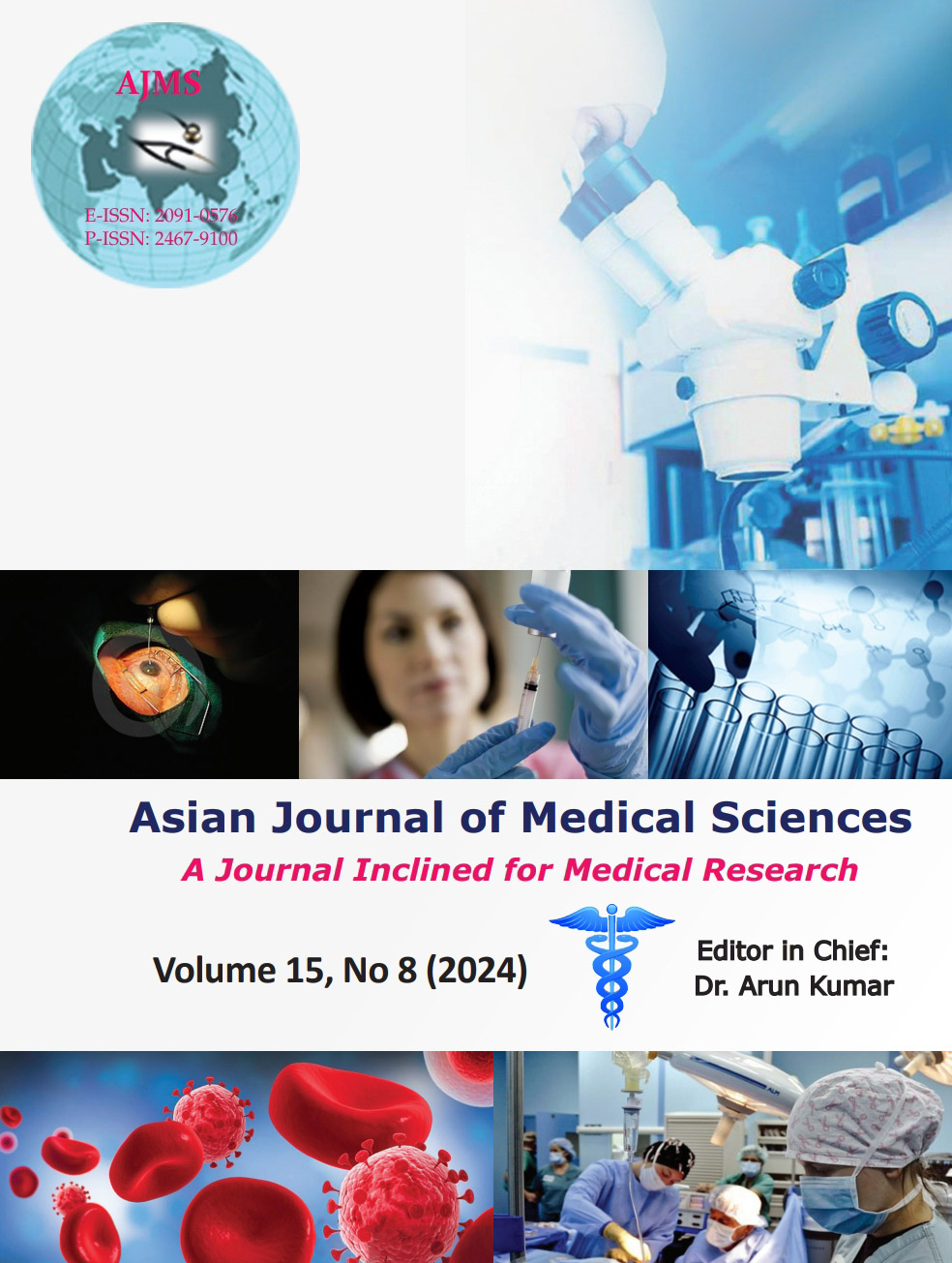Benign bone tumors in North East Indian population – A hospital-based study
Keywords:
Bone tumor; Benign, DiagnosisAbstract
Background: Primary bone tumors are relatively uncommon and constitute only 0.2–0.5% of all tumors in all ages in most series reported worldwide. Benign bone tumors are more common than the malignant bone tumors. Not many studies on benign bone tumors in the North Eastern Indian population are published in the available literature.
Aims and Objectives: The current study was done with the aim to find out the epidemiological data on benign bone tumors in patients of the North-East Indian population who were admitted to the orthopedic department of a teaching institute.
Materials and Methods: A hospital-based retrospective study with prospective effect was conducted on benign bone tumors in patients admitted to the Department of Orthopedics at our teaching institute from 2016 to 2020. Patients of all ages and both sexes with suspicion of bone tumors based on history and clinical examination were subjected to roentgenographic evaluation, including computed tomography (CT) scan and/or magnetic resonance imaging. Pre-operative core needle biopsy under C-arm/CT guidance or incisional biopsy was done for histological diagnosis, followed by appropriate intervention. Soft-tissue tumors and malignant bone tumors were excluded. Patients were followed up for recurrence, complications, and functional recovery.
Results: Forty patients of bone tumors were treated out of 2288 patients admitted to the department (incidence of 1.75%). 29 were benign bone tumors with an incidence of 1.27%. Of 10–20 years age group was most commonly affected. Male preponderance with M: F=6.25:1. Femur (n=16) was the most commonly affected bone. Presenting features were swelling (n=18), pain (n=11), and pathological fracture (n=5). osteochondroma (n=15) was most common followed by giant cell tumor of bone (n=6). Treatment ranged from intralesional steroid to wide marginal excision based on histopathological diagnosis, the extent of tumor, anatomical location, and presenting symptoms. All patients were rehabilitated to activities of daily living at the final follow-up. No recurrence or any long-term complications were reported.
Conclusion: This study gives epidemiological data on benign bone tumors, which can be used for setting up or upgrading dedicated oncological or oncosurgery institutes. A multicentric study on a large population in the future is suggested to obtain a larger data bank.
Downloads
Downloads
Published
How to Cite
Issue
Section
License
Copyright (c) 2024 Asian Journal of Medical Sciences

This work is licensed under a Creative Commons Attribution-NonCommercial 4.0 International License.
Authors who publish with this journal agree to the following terms:
- The journal holds copyright and publishes the work under a Creative Commons CC-BY-NC license that permits use, distribution and reprduction in any medium, provided the original work is properly cited and is not used for commercial purposes. The journal should be recognised as the original publisher of this work.
- Authors are able to enter into separate, additional contractual arrangements for the non-exclusive distribution of the journal's published version of the work (e.g., post it to an institutional repository or publish it in a book), with an acknowledgement of its initial publication in this journal.
- Authors are permitted and encouraged to post their work online (e.g., in institutional repositories or on their website) prior to and during the submission process, as it can lead to productive exchanges, as well as earlier and greater citation of published work (See The Effect of Open Access).




